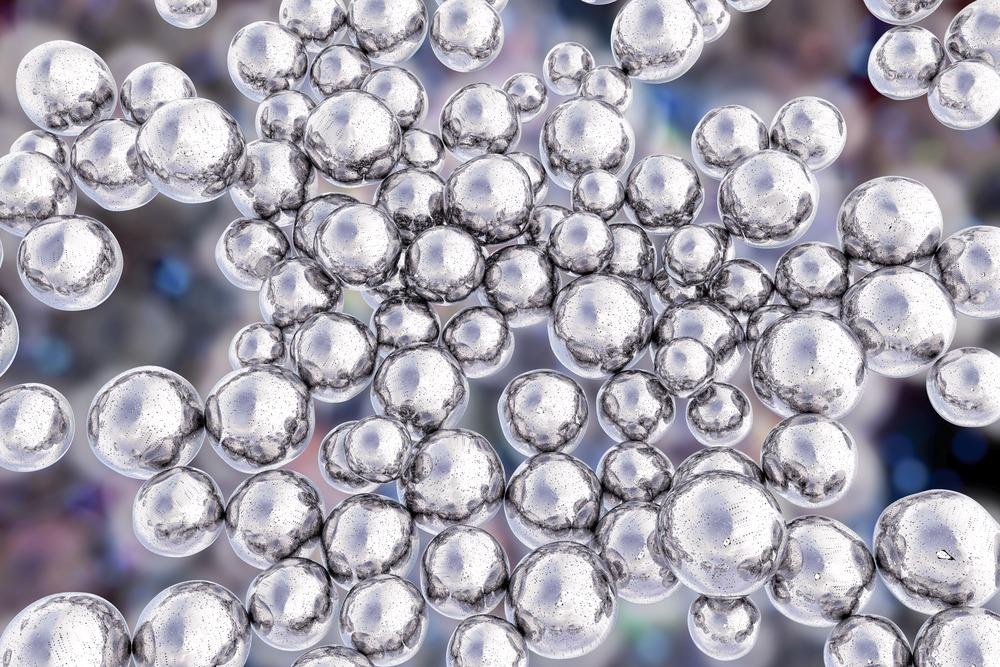
Image Credit: Kateryna Kon/Shutterstock.com
Several different biological methods have emerged as alternative sources for generating a new category of nanoparticles known as green nanoparticles.
Traditional Nanoparticle Synthesis Methods
Nanoparticles are associated with a wide range of unique physical properties, some of which include their specific size, shape, composition, and surface area to volume ratio.
As a result of these properties, nanoparticles can be incorporated into several different applications ranging from water disinfectants and drug delivery systems to quantum dots and pollutant remediating agents. The generation of nanoparticles and their associated properties is primarily due to the specific synthesis process that was used to produce these materials.
Nanoparticles can be synthesized through either physical, chemical, or biological methods. For example, some of the different chemical methods that can be used to synthesize magnesium oxide (MgO) nanoparticles include sol-gel, hydrothermal, co-precipitation, microemulsion, and chemical reduction techniques.
Comparatively, MgO nanoparticles can also be prepared through various physical methods ranging from vapor deposition and plasma irradiation techniques to ultrasonic irradiation methods. Both the physical and chemical processes used to produce nanoparticles are often associated with high energy requirements and associated costs and can also lead to toxic byproducts.
Biological Nanoparticle Synthesis
As compared to the physical and chemical methods used in the generation of nanoparticles, biological synthesis processes are often considered to be more economical, convenient, and environmentally friendly. These characteristics often cause biological syntheses of nanoparticles to be referred to as green synthesis processes.
The biological synthesis of nanoparticles is a bottom-up mode of synthesis. By definition, this involves the arrangement of atoms, molecules, and other small components into more complex assemblies, typically achieved through some of the aforementioned chemical synthesis methods.
Since green nanoparticle synthesis does not utilize chemical methods to produce nanoparticles, this bottom-up approach replaces harmful chemicals with biological substrates such as plants, plant extracts, microorganisms such as actinomycetes, bacteria and fungi, biomolecules, algae, and both industrial and agricultural waste products.
In addition to eliminating the use of toxic reagents, this green mode of nanoparticle synthesis is also associated with improved stability, biocompatibility, sustainability, reduced energy requirements, and ease of scaling up these processes. Moreover, the biological synthesis of nanoparticles produces the nanoparticles themselves and can also stabilize these novel materials by incorporating proteins, carbohydrates, and other organic molecules into the final products.
Using Microorganisms to Generate Nanoparticles
Most prokaryotic microorganisms are equipped to survive extreme environmental conditions in terms of acidity or pH levels, temperature, pressure, and nutrient availability. These microorganisms are therefore equipped with robust and adaptive survival mechanisms that can be manipulated to produce nanoparticles.
Several different metal ions are essential nutrients for prokaryotic organisms. In contrast, other ions are used through different reduction and oxidation reactions to provide these microorganisms with the metabolic energy needed to avoid exposure to non-essential toxic metal ions. Many prokaryotic organisms' adaptation and survival are due to these redox reactions that can eliminate many metal ions, including cadmium, silver, cobalt, chromium oxide, copper, nickel, lead, zinc, and mercury.
Some of the different specialized homeostasis processes that can lead to the generation of these metal ion nanoparticles include chemolithotrophy, which is used for energy production, the integration of these ions into their cellular components, and detoxification.
More specifically, some of the detoxification processes that lead to nanoparticle synthesis include efflux systems and alterations in the solubility and toxicity of these metal ions through biotransformation processes such as oxidation/alkylation, reduction/methylation, biosorption, and bioaccumulation.
Applications of Green Nanoparticles
Many of the applications for the nanoparticles that are produced by physical and chemical methods can also benefit from the use of green nanoparticles. Moreover, these applications can be found in a wide variety of fields, including biomedical, biosensing, catalysis, cosmetics, drug delivery, and food industries.
Silver nanoparticles (AgNPs) have often been utilized for their antibacterial properties against bacteria, fungi, and protozoan pathogens for environmental, pharmaceutical and medical applications. To date, several different plant, bacterial, fungal and algae species have successfully synthesized AgNPs. Some of the other plant species involved in the production of AgNPs include Anogeissus latifolia, Azadirachta indica, Nyctanthes arbortristis, Pinus densifolia, Pistacia atlantica and Red ginseng.
Comparatively, some of the bacterial microorganisms that have been applied to the production of AgNPs include Bacillus cereus, Bacillus pumilus, Bacillus persicus, Bacillus licheniformis, Bacillus subtilus, Bacillus methylotrophicus, Bhargavaea indica, Klebsiella pneumonia Listeria monocytogenes, Streptomyces anulatus and several others.
There is a wide range of methods by which green-synthesized NPs such as AgNPs kill human pathogens. For example, green NPs can kill microorganisms through direct penetration into the pathogenic cells, which creates a redox stress environment to arise within the cell.
This environment subsequently causes the cell to undergo oxidative stress, which can affect various metabolic pathways and ultimately lead to cell lysis.
In addition to their utility in traditional antimicrobial applications, AgNPs produced through green synthesis methods have been shown to directly kill pathogens and influence the ability of certain bacteria to form biofilms. These AgNPs exhibit novel antibiofilm and antimicrobial properties that could be used to treat multidrug-resistant human pathogens.
References and Further Reading
Rana, A., Yadav, K., & Jagadevan, S. (2020). A comprehensive review on green synthesis of nature-inspired metal nanoparticles: Mechanism, application and toxicity. Journal of Cleaner Production 272. doi:10.1016/j.jclepro.2020.122880.
Abinaya, S., Kavitha, H. P., Prakash, M., & Muthukrisnaraj, A. (2021). Green synthesis of magnesium oxide nanoparticles and its applications: A review. Sustainable Chemistry and Pharmacy 19. doi:10.1016/j.scp.2020.100368.
Sharma, D., Shandilya, P., Saini, N. K., et al. (2021). Insights into the synthesis and mechanism of green synthesized antimicrobial nanoparticles, answer to the multidrug resistance. Materials Today Chemistry 19. doi:10.1016/j.mtchem.2020.100391
Disclaimer: The views expressed here are those of the author expressed in their private capacity and do not necessarily represent the views of AZoM.com Limited T/A AZoNetwork the owner and operator of this website. This disclaimer forms part of the Terms and conditions of use of this website.